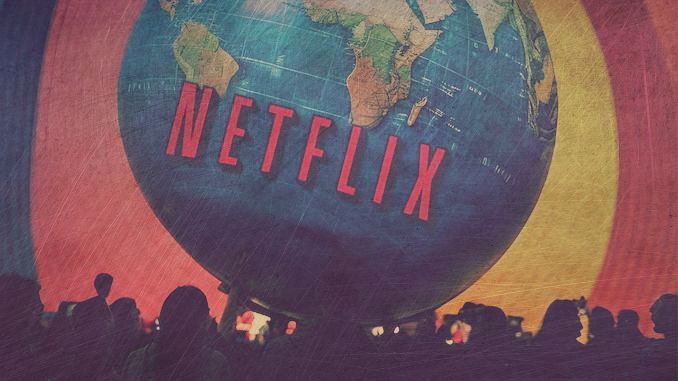Streamers Shift Focus Overseas Spelling Trouble for U.S. Production Output

Netflix and Amazon Studios are the powerhouses of the streaming industry, commanding the majority of content production and licensing activity. However, the bulk of their productions are increasingly taking place outside the United States. This international trend raises concerns about the future of Hollywood’s dominant production status.
Netflix and Amazon Focus Content Production Abroad
Netflix and Amazon now dominate the original content market, accounting for 53% of all streaming content productions in the first quarter of 2024. Combined, they commissioned 355 new films and shows in the year’s first quarter.
Notably, around 70% of these films and shows are for non-U.S. productions. This global shift indicates a move towards locally-produced content, further exacerbating Hollywood’s struggles. As the most active streaming content producers, Netflix and Amazon’s focus on international productions will likely result in a prolonged drought for Hollywood.
Over the past six years, Amazon has tripled its production output, though 2024’s output is expected to be slightly lower than last year’s. Following the merger with MGM, Amazon has reduced its acquisitions of English-language content, leveraging its extensive library of scripted films and series content. Concurrently, there has been a notable increase in non-English content acquisitions. However, Amazon isn’t focusing on Japan and Korea like Netflix.
Disney, a leading player in the industry, has also significantly reduced its content orders. In the first quarter of this year, Disney ordered just 51 streaming shows and films, compared to Netflix’s 215 and Amazon’s 140. This production low was Disney’s second-lowest figure since the second quarter of 2020, the early days of the lockdowns.
With cheaper labor and fewer regulations abroad, shifting to international markets is a permanent trend for U.S. streamers and studios alike.
Hollywood’s Production Decline Deepens
Lockdowns, strikes, and exploding production costs have pushed many productions overseas, especially for streaming services with global ambitions. Hollywood production volumes have declined steeply since the second quarter of 2023. Stateside production is down 40% in the second quarter of 2024 compared to peak television levels of filming during the same period in 2022.
This dramatic downturn has severely impacted all entities within the supply chain, including studios, service providers, streamers, and other licensees. More recently, productions were down 13% in June compared to May 2024.
Current trends suggest that Hollywood will not return to its peak. The global nature of film and television production, driven by cost-efficiency and the search for new markets with local content, is a significant factor in this decline.
The implications of these trends are troubling for U.S. production crews. As Netflix’s overseas spending is set to surpass its domestic budget for the first time, the prospect of a rebound in U.S. production looks grim. The strike-induced production gap has already significantly reduced U.S. content, with international titles filling the void.
Notwithstanding trends to move productions abroad, globally, production in the second quarter of the year was likewise down by about 20% compared to 2022.
Endless Content Spending Growth Faces Economic Realities
Global content spending is expected to grow to nearly $250 billion in 2024, up a modest 2% from last year. Last year was way worse than expected for content spending due to multiple strikes, an investor revolt, and audiences rejecting lazy sequels, spinoffs, and reimaginings of films and shows that lacked even a modicum of imagination or self-reflection.
Last year saw a significant decline in U.S. scripted releases, dropping by 24% to 481, down from 633 in 2021 and 2022. The decrease in scripted shows released in 2023 was unsurprisingly influenced by Hollywood’s concurrent writers’ and actors’ strikes, which halted most productions from May until November.
Studios and Streamers Look Overseas for Subscribers and International Hits
Spending in North America by television producers is expected to drop over 25% over the next few years from its all-time highs in 2022.
The costs to produce films and shows have exploded over the last few years in the United States for many reasons, verboten to mention. This new focus on international content aims to substantially drive down content creation costs while appealing to foreign markets far less saturated than English-speaking and European countries.
Streamers are also gambling that it can manufacture a multitude of international hits, like “Squid Game,” despite all evidence to the contrary. Purportedly, Netflix only spent $21 million to produce the series, which is nearly the cost of one episode for a third or fourth season of a stateside hit show.
Furthermore, Netflix and Amazon are now looking overseas as the U.S. market nears subscriber saturation and is likely heading towards contraction in the coming year. However, these supposed areas of massive growth, such as India and Africa, are fool’s gold for streaming executives and their already disappointed investors.
For instance, the monthly average revenue per user (ARPU) for Warner Bros’ Max streaming service in the last quarter of 2023 was $10.66 for domestic subscribers and only $3.37 internationally. Such a wide margin highlights the importance of retaining valuable domestic subscribers as the company tries to expand its streaming service globally, which is highly cost-intensive, as Netflix has learned.
Source:filmtake

熱門頭條新聞
- Submissions for 2025 Films are Open–ANNECY 2025
- Victura Introduces the World’s First Documentary Video Game
- Marvel Rivals Unveils Moon Knight Set to Join Launch Roster of All-Star Characters on December 6th
- A global business space for Latin American Animation projecting itself to the world
- Best Cinematography: The Digital Reign And Film’s Revival At The Oscars
- VIGAMUS IS EVOLVING: INTRODUCING GAMM – GAME MUSEUM
- Deadline of Reallusion’s 2024 Animation At Work Contest: January 7
- Nintendo to open new Donkey Kong area in USJ in December
